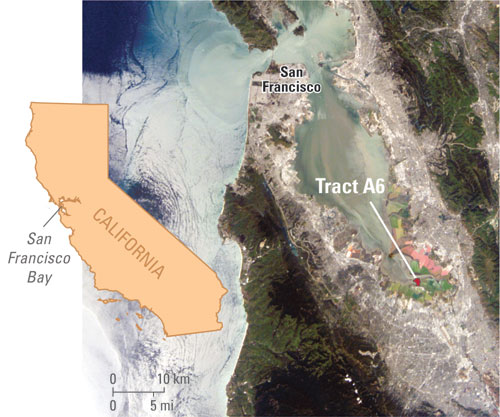|
||
Coordinators:
1cy June 2cy Jan 3cy Jan 4cy / sub-ad Jan adult Jan |
sub-adult: MayThe Don Edwards National Wildlife Refuge, the San Francisco Bay Bird Observatory (SFBBO), and the U.S. Geological Survey (USGS) asked for help in 2011 in tracking the California gull (Larus californicus; referred to as "CAGU") as part of the South Bay Salt Pond Restoration Project. This gull species, which is native to California, has left an interesting history in its wake. Normally breeding in inland areas like Mono Lake, CAGUs suddenly began appearing in the San Francisco Bay area in dramatic numbers over recent decades, increasing from less than 200 before 1982 to more than 45,000 counted in 2008.
According to USGS Western Ecological Research Center scientist Josh Ackerman, these gulls may have been attracted to the region because of its nearby landfills. In addition to seeking out food scraps, however, CAGUs have been voracious predators of other nesting waterbirds in the area, raiding the eggs and chicks of American avocets and black-necked stilts (see http://www.werc.usgs.gov/Project.aspx?ProjectID=184). Some 20,000 CAGUs have been nesting each year in Tract A6 of the South Bay Salt Pond Restoration Project—a massive multiagency effort that’s restoring acres of formerly private land back to natural wetlands (see map). In December 2010, levees were breached to restore Tract A6 as a tidal marsh—no longer a static, drying field, but instead a dynamic marsh with the daily ebb and flow of the bay tides. (Visit http://www.werc.usgs.gov/outreach.aspx?RecordID=24 to see photographs of the breaching process.) So where will 20,000 voracious gulls go this year to establish new colonies? Researchers need your help to find out. Caitlin Robinson-Nilsen of SFBBO is collecting the sighting data, which will contribute to research by Ackerman and managers at Don Edwards National Wildlife Refuge. Here's how to participate:
It's collaborative science at its best, and your observations can help researchers understand the distribution and movement of a key species—as well as the effects and implications of an ecosystem-restoration project. |
|
 California Gull californicus
California Gull californicus